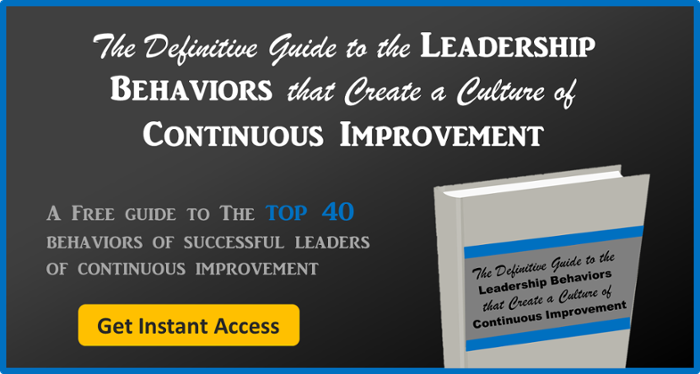 We’ve written before about how to lay out the road map for your next rapid improvement or Kaizen event. Careful planning is essential to an effective event, but what happens afterward is important as well.
We’ve written before about how to lay out the road map for your next rapid improvement or Kaizen event. Careful planning is essential to an effective event, but what happens afterward is important as well.
We’ve seen too many apparently successful events fail to have a lasting impact because processes quickly devolve right back to where they were before the improvement effort.
If you want your rapid improvement events to result in lasting positive change, and you want each event to be even better than the last, be sure to ask these questions when it is over.
What went right?
It is smart to look for the things that worked well so that they can be documented and repeated. Perhaps a particular improvement cycle like DMAIC was central to the positive outcome; this is worth noting. Make sure to talk to people about what went right, too. It may seem like a no-brainer, but it's so easy to fall into the trap of jumping straight into what went wrong and should be improved. By taking a few minutes to focus on the positive and recognize the people who contributed, you'll boost morale and encourage future engagement.
What went wrong?
Almost every improvement event will have a few hiccups. Identify them and discuss ways that they might be avoided in the future. Were there steps missed during the planning phase, or were important stakeholders overlooked? A bit of root cause analysis on the obstacles faced during your event will help you improve on the next one. The most important thing here, though, is to make sure that you're looking for WHAT went wrong, not WHO did it. Pointing fingers won't do you any good. Instead, focus on ways to improve so that no one makes the same mistake again.
What was the result of the improvement compared to the baseline?
You had a baseline, right? OK, good. Now you can apply the objective measurements that you identified before the event to determine how much improvement was achieved based on your specific goals. It's worth taking the extra time to at least estimate your starting state, even if you're improving something that is hard to get firm, accurate data around. If you skip this step, it'll be a lot harder to demonstrate the impact of the improvement afterward.
How will we sustain the improvement?
This is a big one. Without a specific plan and people with accountability, all of your efforts may be for naught. Select appropriate intervals at one month, six months, one year, and so forth to check the metrics and report results. Make the necessary updates to Standard Work and don’t skimp on training. Make sure that you log it in an improvement software platform, so that people can do a simple keyword search for it later when working on new projects in that area.
How will we measure the impact of the improvement over time?
It is great to know immediately how you are doing vs. the baseline, but ideally, your improvement efforts will bring you returns far into the future. There may be things that don’t make sense to measure immediately but will be informative in six months or a year. Right after the event is a good time to figure out what they are. Keep in mind that it isn't just the financials that matter; qualitative improvements such as quality, safety, cycle time, and staff and customer satisfaction are critical to business success as well.
Who can we thank?
Recognition and appreciation fuel an improvement culture. Don’t miss the opportunity immediately following your rapid improvement event to thank the team members and others who contributed to success. Doing show reminds everyone that you value their work and respect the unique input they bring to the table, thus encouraging them to engage even more in the future.
Did we uncover any opportunities for incremental improvement?
Not every improvement requires a full-scale rapid improvement event. Incremental improvements can, and should, be made every day. It is not uncommon that during an improvement blitz, teams identify smaller opportunities that should be documented and implemented in between events. Improvement software will help you keep track of those (and the event, of course) so that nothing slips through the cracks once attention has shifted from the event elsewhere.
These questions form a good basis for a post-event debrief with the participants. They also make a great structure for reporting the results and lessons learned from your event to executive leaders. When it comes to rapid improvement events, it’s not over when it’s over.



Add a Comment